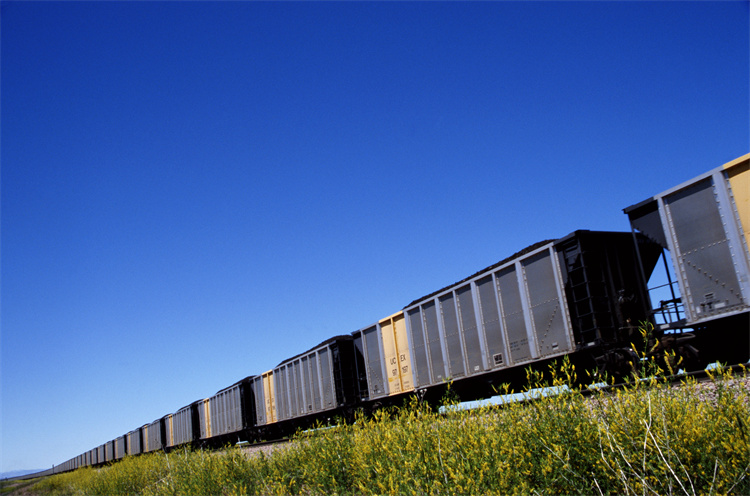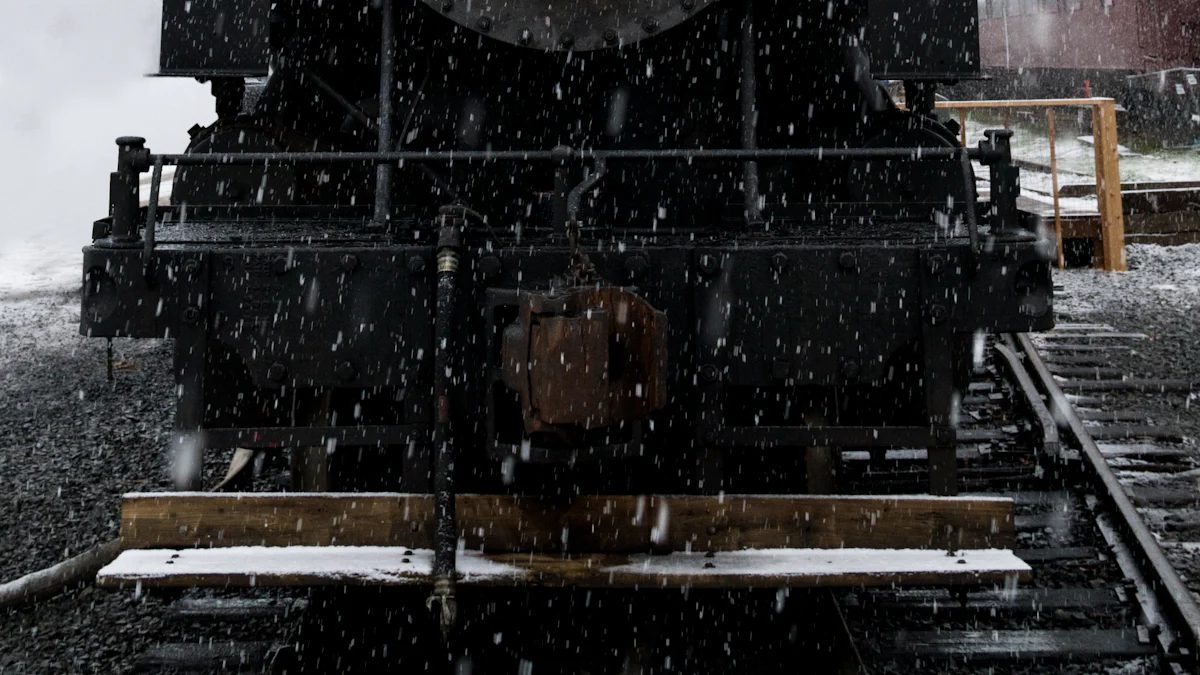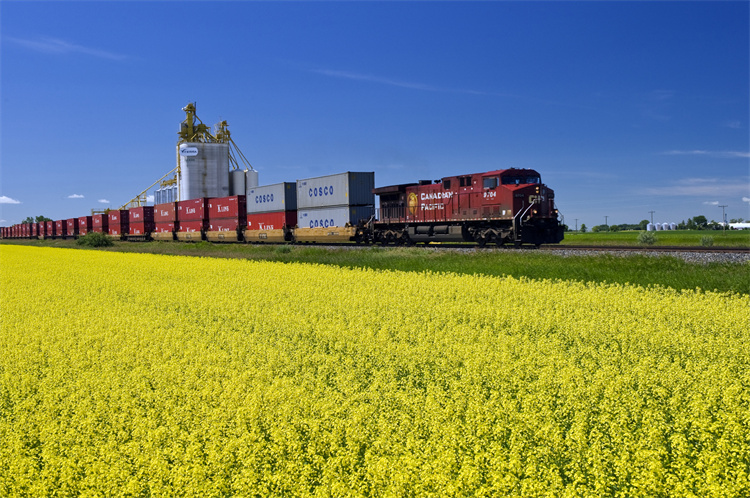Tracing the Tracks: The History and Growth of Rail Transport

Rail transport serves as a cornerstone of global development. The rail industry supports millions of jobs and generates billions in economic output. Railways offer a cost-effective solution for transporting heavy freight over long distances. Trains use less fuel per ton-mile compared to trucks, reducing both costs and carbon emissions. Rail transport also provides an energy-efficient mass transit system, which helps in achieving net zero carbon emissions goals. The global rail network spans over 1.3 million route kilometers, making it a vital component of sustainable transportation.
The Origins of Rail Transport

Early Beginnings
Ancient and Medieval Predecessors
Rail transport has roots that trace back to ancient civilizations. Early forms of rail systems appeared in Greece and Rome, where grooves in stone paths guided wheeled vehicles. These primitive tracks reduced friction and facilitated the movement of heavy loads. During the medieval period, wooden rails known as "wagonways" emerged in Germany. These wagonways marked a significant step toward modern rail transport. Miners used them to transport coal from mines to nearby rivers. This innovation laid the groundwork for future advancements in rail technology.
The Advent of Railways in the 19th Century
The 19th century witnessed a revolutionary shift in rail transport. The opening of the Liverpool and Manchester Railway in 1830 marked the first railway to rely exclusively on steam power. This development revolutionized transportation by significantly reducing travel time and costs. The success of this railway inspired other countries to invest in rail infrastructure. Rail networks expanded rapidly across Europe and North America. In the United States, Colonel John Stevens conceived the idea of constructing a railroad in 1812, leading to the birth of the modern railroad industry. Rail transport became an essential component of economic growth and industrialization.
The Industrial Revolution
Impact on Rail Transport Development
The Industrial Revolution played a pivotal role in the evolution of rail transport. Factories required efficient means to transport raw materials and finished goods. Railroads provided a solution by offering faster and more reliable transportation than canals or roads. Rail transport facilitated the movement of large quantities of goods over long distances. This efficiency boosted trade and commerce, contributing to economic prosperity. The development of railroads also stimulated urbanization by connecting rural areas with cities.
Key Figures and Innovations
Several key figures and innovations shaped the development of rail transport during the Industrial Revolution. George Stephenson, known as the "Father of Railways," designed the Locomotion No. 1 and the famous Rocket locomotive. These inventions set new standards for speed and efficiency in rail transport. The introduction of iron rails replaced wooden ones, enhancing durability and load capacity. The Golden Age of Railroads saw the expansion of rail networks across continents. Iconic railways like the Orient Express and the Trans-Siberian Railway emerged, symbolizing luxury and connectivity.
Rail transport continues to evolve, building on its rich history and technological advancements. The legacy of early pioneers and innovations remains evident in today's global rail networks.
Expansion and Technological Advancements

The Golden Age of Railways
Expansion Across Continents
Rail transport experienced unprecedented growth during the Golden Age of Railways. This period saw the expansion of rail networks across continents, transforming economies and societies. Europe and North America witnessed extensive railway construction, connecting cities and regions like never before. Railroads facilitated the movement of goods and people, enhancing trade and commerce. The expansion of railways played a crucial role in the industrialization of many countries. Rail transport became the backbone of economic development, driving progress and prosperity.
Rail Baltica emerged as a historical milestone in high-speed railway development. This project enhanced connectivity and transportation efficiency in the Baltic region. Rail Baltica represented a significant step toward regional integration and economic growth. The adoption of cutting-edge railway technologies set new standards for rail transport. This project exemplified the transformative power of railways in shaping modern transportation.
Technological Breakthroughs
Technological breakthroughs marked the Golden Age of Railways. Innovations in rail transport revolutionized the industry, setting new benchmarks for speed and efficiency. The introduction of steam locomotives transformed rail travel, reducing travel time significantly. Railways adopted iron rails, replacing wooden ones, to enhance durability and load capacity. These advancements allowed trains to carry heavier loads over longer distances.
Rail transport's impact on global logistics cannot be overstated. Railways reshaped the transportation landscape, becoming an essential element of international trade. The efficiency and reliability of rail transport facilitated the movement of goods across borders. Railways played a pivotal role in connecting markets and driving economic growth. The technological advancements of this era laid the foundation for future innovations in rail transport.
The 20th Century Transformations
Electrification and Dieselization
The 20th century witnessed significant transformations in rail transport. Electrification and dieselization marked a new era in railway technology. Electric trains offered increased speed and efficiency, reducing reliance on steam power. Electrification improved the environmental impact of rail transport by reducing emissions. Diesel locomotives provided greater flexibility and range, enhancing the capabilities of rail networks.
Rail transport continued to evolve with these technological advancements. Railways embraced new technologies to meet the demands of modern transportation. The shift to electric and diesel trains represented a major leap forward for the industry. These innovations improved the sustainability and performance of rail transport. The 20th century transformations paved the way for the rise of high-speed rail.
The Rise of High-Speed Rail
High-speed rail emerged as a game-changer in the world of rail transport. The development of high-speed trains revolutionized travel, offering unparalleled speed and comfort. Countries like Japan and France led the way with their pioneering high-speed rail systems. The Shinkansen and TGV set new standards for rail travel, inspiring other nations to follow suit.
High-speed rail offered numerous benefits, including reduced travel times and increased connectivity. Rail transport became a viable alternative to air travel for many routes. The rise of high-speed rail contributed to economic growth and regional development. Railways played a vital role in enhancing global connectivity and infrastructure. The future of rail transport promises even more exciting advancements and opportunities.
Modern Implications and Future Prospects
Current Trends in Rail Transport
Sustainability and Environmental Impact
Rail transport stands as a leader in environmental sustainability. The rail industry offers the most sustainable mass transit system available today. Railways consume less energy compared to other modes of transportation. This efficiency makes rail transport an environmentally responsible choice. Railroads have improved fuel efficiency, reducing emissions significantly. Many rail companies now test battery-electric and hydrogen fuel cell locomotives. These innovations aim for net-zero emission operations. Transforming railroad power to clean fuels remains critical for environmental protection. Sustainable rail infrastructure development continues to gain focus globally.
Technological Innovations in the 21st Century
The 21st century has brought remarkable technological innovations to rail transport. Railways now incorporate advanced technologies to enhance performance. High-speed trains offer unprecedented speed and comfort. Rail networks integrate digital systems for better efficiency. Automation and artificial intelligence optimize rail operations. Smart technologies improve safety and reliability in rail transport. Rail companies invest in research to develop cutting-edge solutions. These innovations ensure rail transport meets modern demands. The rail industry continues to evolve with technological advancements.
The Future of Rail Transport
Emerging Technologies
Emerging technologies promise to revolutionize rail transport. Hyperloop systems present a futuristic vision for high-speed travel. Magnetic levitation trains offer faster and smoother journeys. Rail companies explore the potential of autonomous trains. These innovations aim to transform passenger and freight transport. Rail transport will benefit from advancements in renewable energy. Solar-powered trains may become a reality in the near future. Emerging technologies will redefine the capabilities of rail transport.
Global Connectivity and Infrastructure
Global connectivity remains a key focus for future rail transport. Railways play a vital role in enhancing international trade. Rail networks connect markets and facilitate economic growth. Infrastructure development supports the expansion of rail transport. Countries invest in projects to improve rail connectivity. Rail Baltica exemplifies efforts to integrate regional rail networks. Global initiatives aim to create seamless rail connections. Rail transport will continue to drive global connectivity and infrastructure development.
Rail transport has journeyed from ancient grooves to high-speed marvels. The evolution of railways showcases the power of human innovation. Railways have transformed economies and societies. The ongoing relevance of rail transport remains undeniable. Railways offer sustainable solutions for modern challenges. Emerging technologies promise a future filled with possibilities. Rail transport will continue to shape global connectivity. The potential of railways inspires progress and development. Railways stand as a testament to human ingenuity and ambition. Embracing the future of rail transport ensures a sustainable and connected world.
See Also
Navigating the Future: Logistics Advancements through Digital Innovation
Revolutionizing Logistics: Exploring the Future of Technology
Ready for Change? Discovering the Latest in Supply Chain Technology
Future of Supply Chains: Paving the Way for Career Advancement
